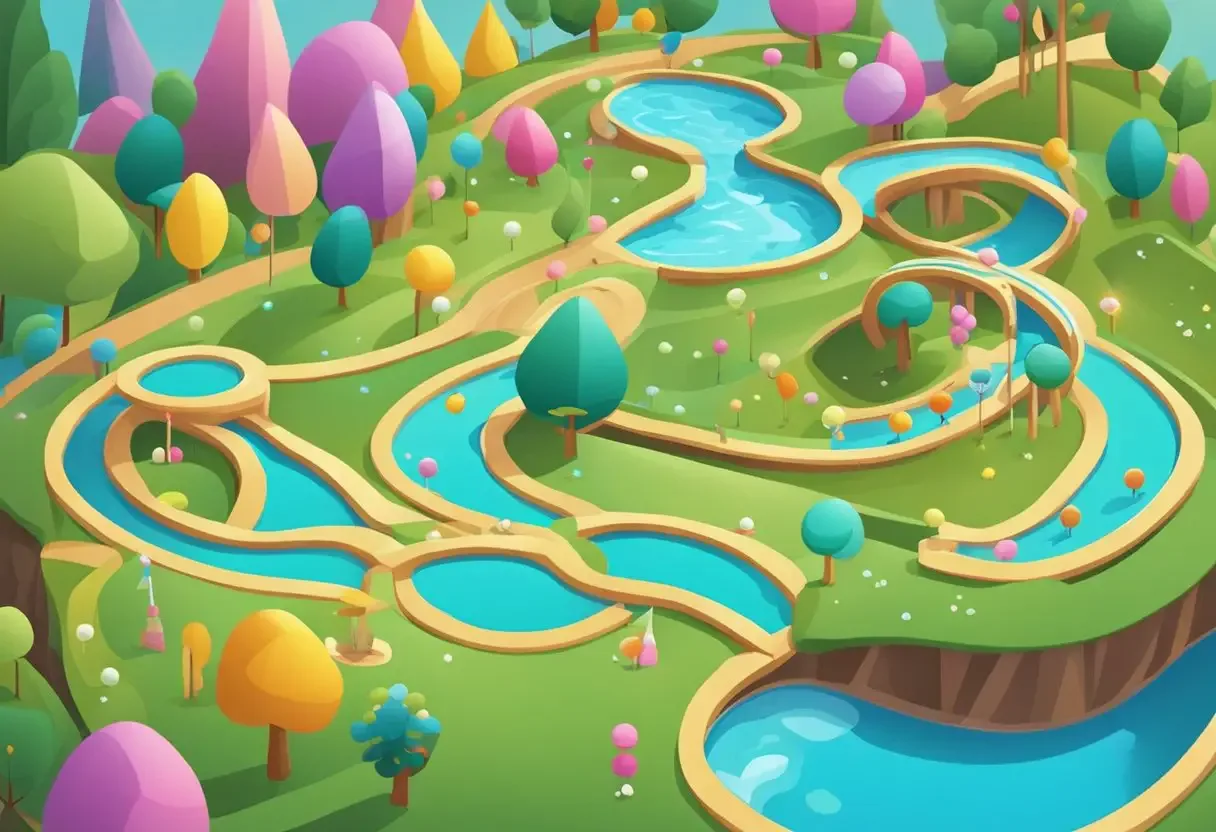Putt-putt golf, also known as mini-golf, presents a creative and scaled-down variation of traditional golf.
This miniature version focuses mainly on the putting aspect of the sport, where players aim to get the golf ball into the hole with as few strokes as possible.
Unlike its parent game, mini-golf features unique courses that often include various themes and colorful obstacles, ranging from windmills to fictional characters.
These fun and whimsical elements are a significant draw, providing an entertaining experience that both children and adults can appreciate.

Mini-golf goes by several names — including crazy golf and adventure golf, reflecting its playful nature and the imaginative design of its courses.
The objective remains consistent: navigating the ball through a series of obstacles to achieve the lowest possible score on a nine or eighteen-hole course.
While it is competitive, the emphasis is on enjoyment, making it a popular activity for parties, family outings, and casual recreation.
The history of Putt-Putt Fun Centers began in 1954, establishing a franchise model for miniature golf that expanded over time.
These centers, with their hallmark Par 2 courses, have evolved into all-encompassing family entertainment locations, still holding true to the core of providing safe and enjoyable community entertainment.
It’s a pastime that has endured for decades, continually adapting to new audiences while retaining the fundamental challenge and joy of the putting game.
Playing Putt Putt Golf

Putt putt golf, a variation of miniature golf, offers a fun and competitive experience that emphasizes skillful putting.
The game has evolved to include a range of equipment, diverse courses, and refined techniques for players of all ages.
The Game and Its Rules
Putt putt golf is played on miniature courses featuring a series of unique and creatively designed holes.
It emphasizes precision putting and often includes a variety of obstacles such as ramps, windmills, and tunnels.
The objective is to complete each hole in the fewest strokes possible, adhering to rules set by places like the Professional Putters Association, which governs official competitions.
Equipment and Gear
Essential gear for playing putt putt consists of a putter and a golf ball.
Putters vary in size and should match a player’s height and comfort.
Golf balls also come in different weights and colors, the latter helping distinguish players’ balls during the game.
There’s no need for specialized golfing attire, but comfortable clothing suitable for the weather and proper footwear are recommended.
Techniques and Practice
To excel at putt putt, one’s putting stroke needs to be consistent and controlled.
Players should focus on alignment, ball placement, and reading the green.
Regular practice helps in honing the ability to judge speed and trajectory, essential for overcoming obstacles and making holes-in-one.
Courses and Challenges
Courses in putt putt are designed to entertain and challenge.
They often feature imaginative landscaping with themes like castles or waterfalls, along with bunkers and courses that may be affected by varying weather conditions like rain.
Each hole poses a different challenge, requiring players to adapt their technique to succeed.
Frequently Asked Questions
What is the history behind miniature golf?
Miniature golf, often known as putt putt golf, traces its roots back to the 19th century in Scotland.
It was created as a scaled-down version of the sport, making golf more accessible and emphasizing the putting aspect of the game.
The first standardized minigolf courses appeared in the United States in the 1920s, and the game has since spread worldwide, with unique course designs and themes.
Are there any special rules for playing putt putt golf?
Putt putt golf generally adheres to the basic principles of golf, focusing on putting skills.
Players must navigate various obstacles that are characteristic of mini golf courses, which are not found in traditional golf.

